Nandu's Magical Meghalaya Escape with Thrillophilia
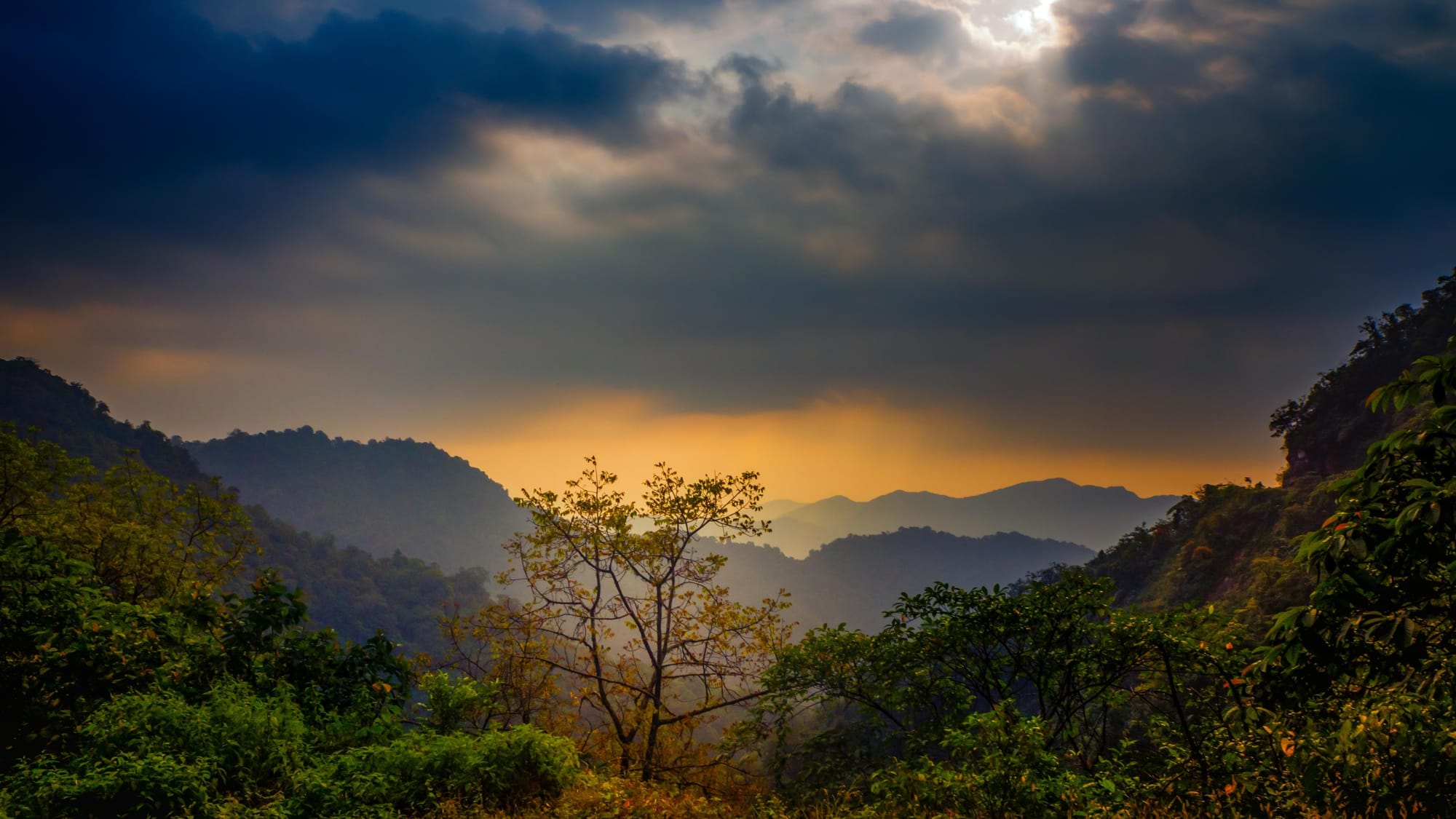
The water tumbled down in a silvery ribbon and crashed softly into mossy rocks below. Nandu Gopal stood in front of Elephant Falls, camera in one hand and the other wrapped gently around his wife’s fingers. The sound of the water drowned out the city inside his mind, and in that moment, standing amid ferns and mist, everything else faded.
He had not been sure what to expect when he booked their anniversary trip through Thrillophilia. But the moment they reached Meghalaya, he realised it was a memory in the making. The kind that stays long after the suitcase is unpacked.
This trip was all about finding something together again in the green and rain-washed corners of India that most people dream about but never visit.

A Journey That Started With A Box
The idea for the trip had started quietly with a conversation between passing thoughts that grew roots. His wife had mentioned once, years ago, how she always wanted to see the living root bridges of Meghalaya. He had filed it away.
And then one day, as their anniversary approached, he remembered. He tucked a printed itinerary into a hand-carved box and placed it on their table. Her eyes widened when she saw the words Shillong, Cherrapunji, and Dawki.
“You planned all this?” she had asked with surprise and delight.
“With Thrillophilia,” he had smiled. “They helped me make it special.”
They landed in Guwahati on a cool April morning in 2025. From there, a car took them away toward Shillong. And it was only the beginning.
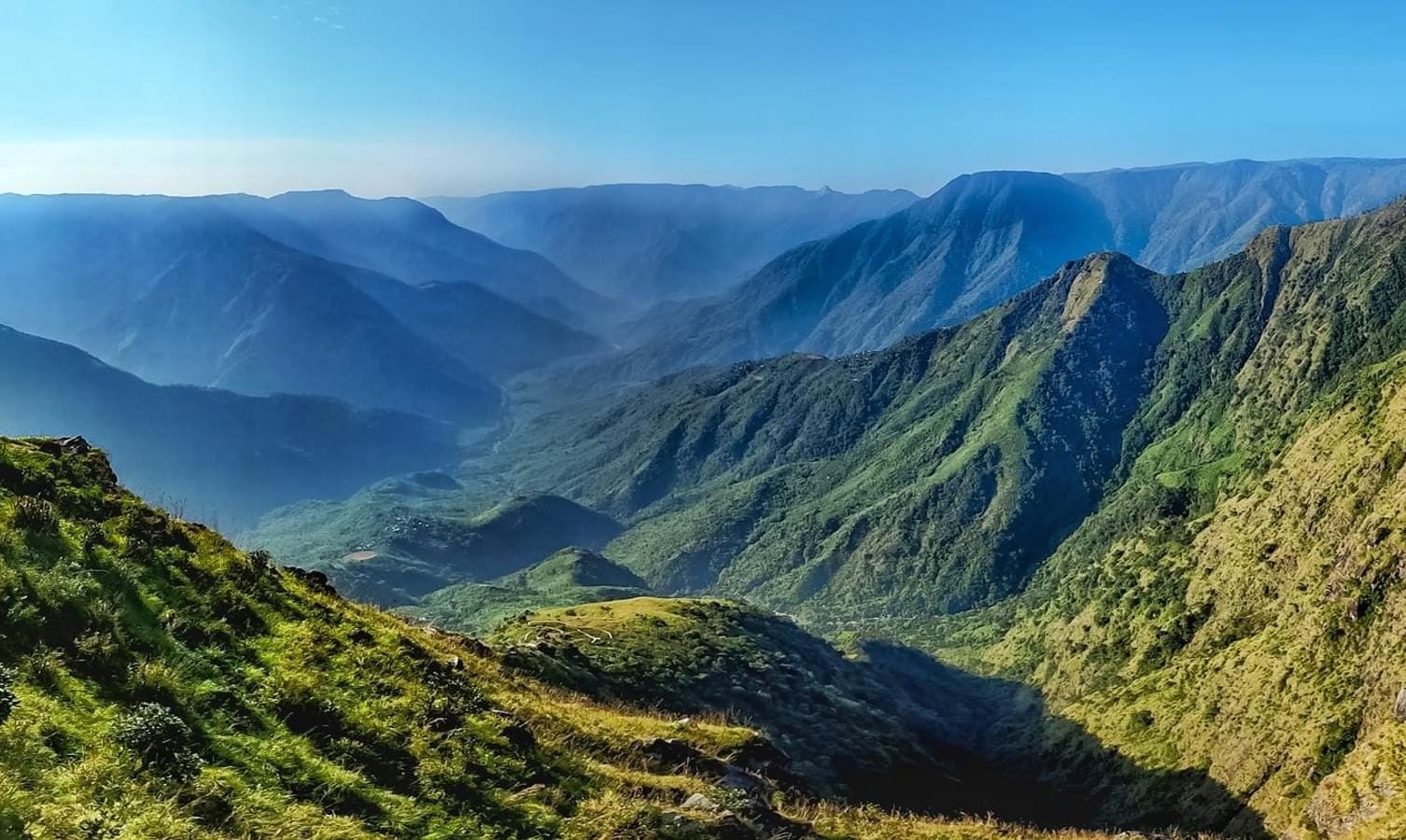
Chasing Waterfalls and Cave Whispers
The first day in Shillong was gentle. They wandered through Phan Nonglait Park, where the breeze carried the children’s laughter, and paused to soak in history at the Rhino Heritage Museum. The cool air and the gentle hum of distant hills that night lulled them into deep sleep.
But it was the next morning, as they drove toward Cherrapunji, that Meghalaya began to open up like a secret.
Their first stop was the Elephant Falls. The water of this fall cascaded down in stages, surrounded by thick greenery and slippery stones. Nandu watched his wife laugh like a young girl again, drenched in spray.
At Seven Sisters Falls, they stood in silence. The water seemed to fall from the sky itself. Then they visited the tall NohKaLikai Falls, whose tragic legend added a haunting aspect to its already stunning view.
Later, inside Mawsmai and Arwah caves, torchlights illuminated the limestone walls. The air was thick with mystery, and the echo of every footstep reminded them how old and alive these rocks truly were.
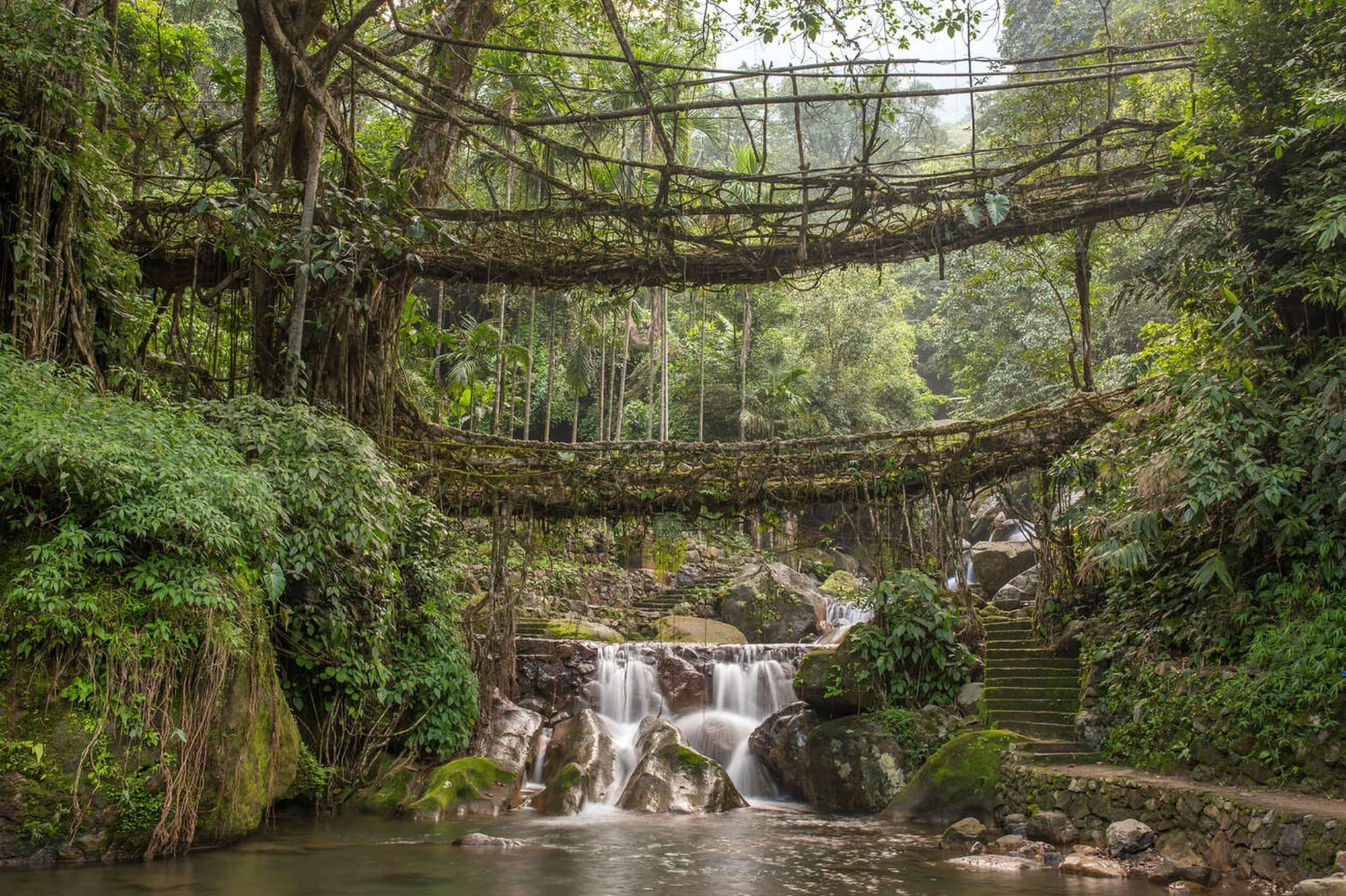
The Steps That Changed Everything
The third day of the itinerary was a trek to Nongriat.
The couple reached Tyrna Village early. The sun had not fully risen, and the forest around them was still stretching awake. A local guide smiled, gestured toward the stone steps, and said, “Just 3,500 to go.”
They laughed nervously until they began.
Down, down, and further down, through jungle trails and hidden streams. Nandu’s knees ached, and his wife had to stop often, but the view kept them going. Birds called from unseen perches, and the air smelled of rain and roots.
And then, finally, the Double Decker Living Root Bridge came into view.
It was indeed a live bridge. Formed over decades as the Khasi people trained rubber tree roots to intertwine, it spanned the stream like something out of a fantasy novel.
They sat beside it, shoes off, legs in the water, and shared oranges with other trekkers. Nandu could not stop smiling.
“This,” he whispered, “was worth every step.”
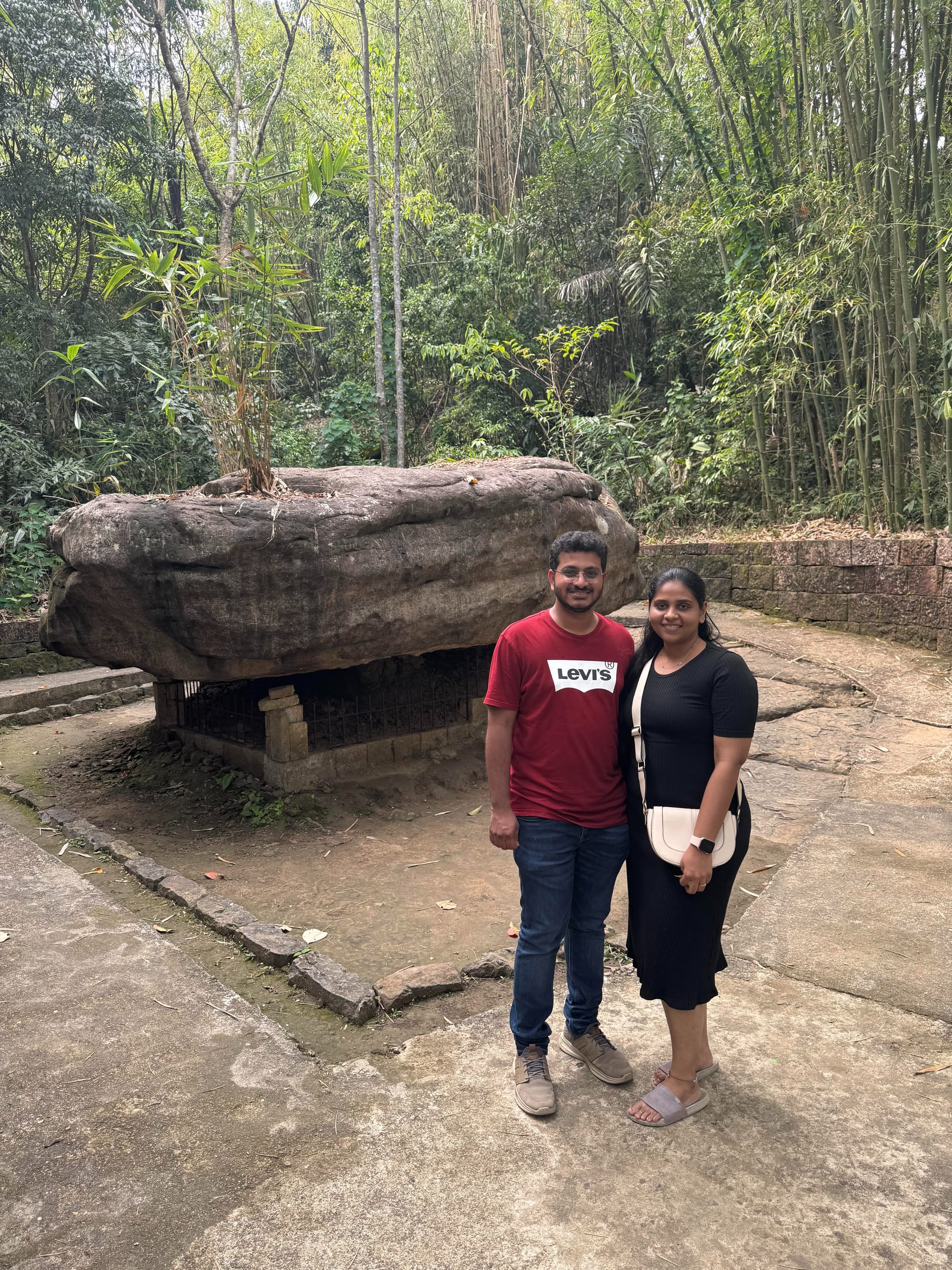
From Cleanest Village to Crystal Waters
After the physical challenge of Nongriat, the next day was a reward. They drove through winding roads toward Mawlynnong, often called the cleanest village in Asia.
It truly was spotless. No plastic, no clutter, and no noise. Just quiet dignity and flowering gardens. The people here smiled with their eyes, and the children waved shyly. They climbed the Single Decker Root Bridge in nearby Riwai and posed for a picture under the vast green canopy.
On their way to Dawki, they stopped at the Balancing Rock - a curious geological formation where a giant stone rested perfectly on a smaller one, completely defying gravity.
Then came the Umngot River in Dawki.
It was exactly as they had seen in pictures, but more magical in real life. The water was so clear that the boats appeared to float on glass. They just sat in the boat and soaked in the stillness.
That night in Dawki, Nandu did not need music or screens. Just the rhythmic lapping of the river outside was enough.
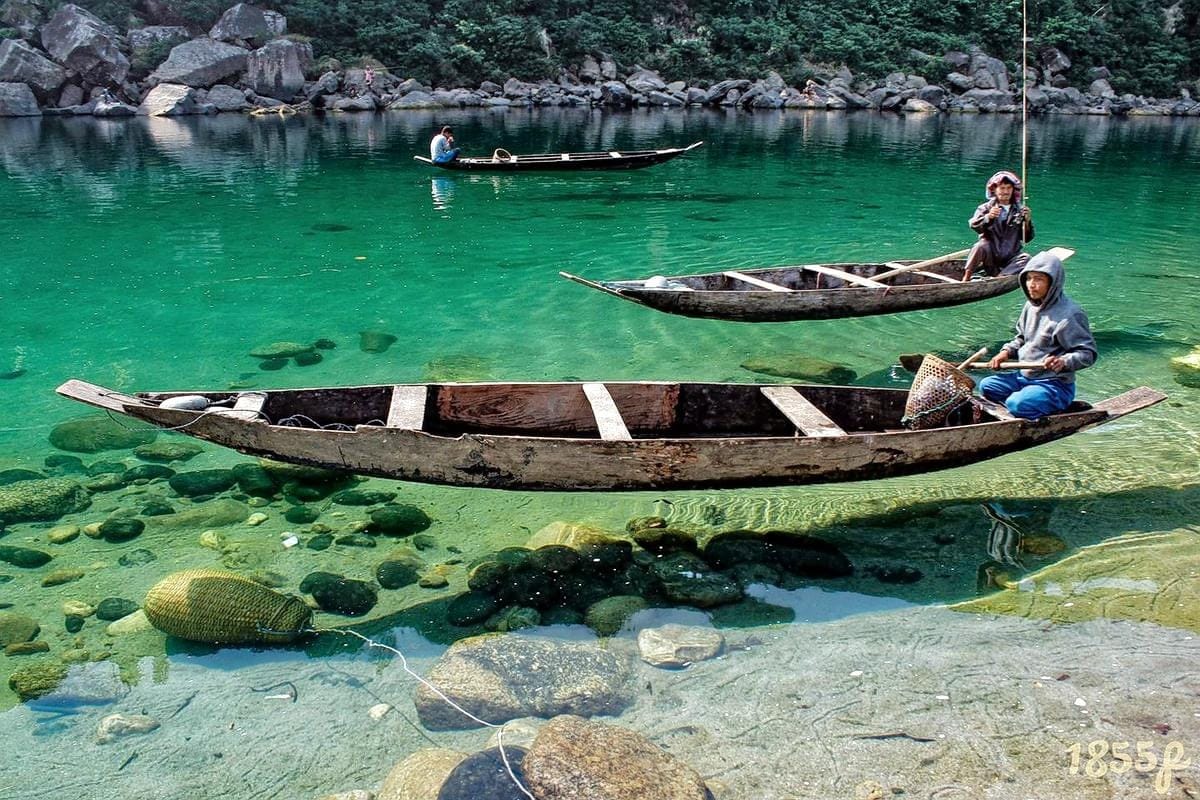
Canyons, Waterfalls, and the World Below
They began the next morning with a light breakfast and headed to Shnongpdeng. Here, they chose to boat once again, but this time with the sun overhead and laughter from nearby kayakers filling the air.
On their return journey to Shillong, they made two memorable stops.
The Krang Shuri Falls were like a jewel hidden in the forest. The water was turquoise blue, unlike anything they had seen. They dipped their feet, took dozens of photos, and lay on a rock watching the sunlight filter through the trees.
But it was Laitlum Canyon that made them stop in their tracks.
The hike was not long, but the view was endless. Hills rolled like waves, clouds kissed the edges, and the wind carried secrets from the valley below. They stood at the edge.
Nandu placed his arm around his wife and said, “I don’t want to forget this. Ever.”
She nodded.
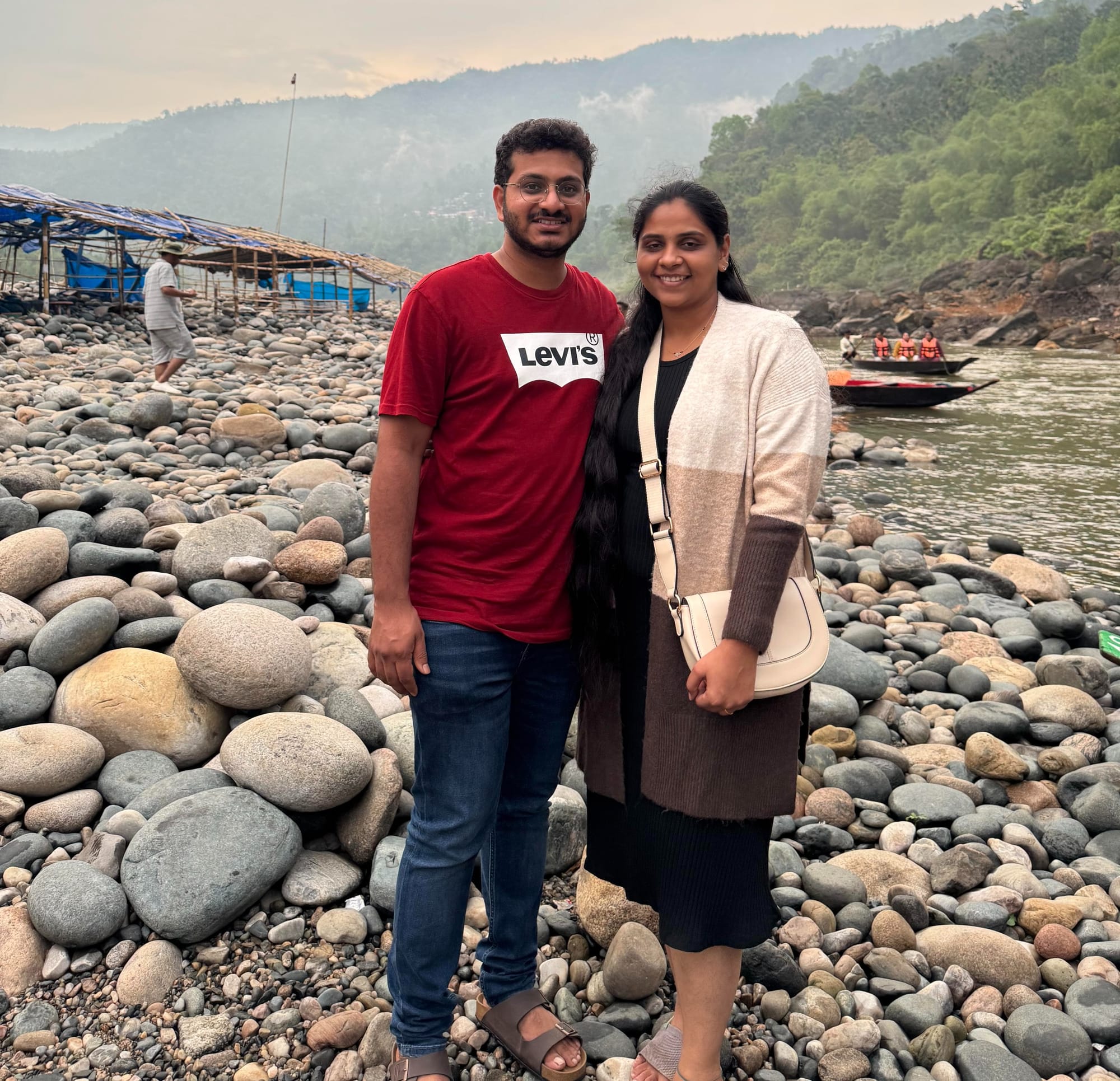
It Was Time to Bid Farewell
Their final morning was quiet. On their way back to Guwahati, they visited the Kamakhya Devi Temple. Nandu was not a deeply religious man, but something about the temple’s energy grounded him.
At the airport, as they waited for their flight, he scrolled back through their photos.
There was one picture that stood out, which was taken at Elephant Falls on day one. His wife, standing on a rock surrounded by mist and water.
That is when he knew that the journey had brought them closer to each other.
Read More: Thrillophilia Meghalaya Reviews